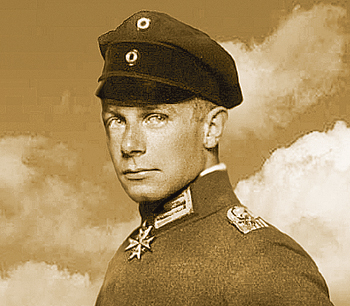INDIAN ARMED FORCES CHIEFS ON OUR RELENTLESS AND FOCUSED PUBLISHING EFFORTS

The insightful articles, inspiring narrations and analytical perspectives presented by the Editorial Team, establish an alluring connect with the reader. My compliments and best wishes to SP Guide Publications.

"Over the past 60 years, the growth of SP Guide Publications has mirrored the rising stature of Indian Navy. Its well-researched and informative magazines on Defence and Aerospace sector have served to shape an educated opinion of our military personnel, policy makers and the public alike. I wish SP's Publication team continued success, fair winds and following seas in all future endeavour!"

Since, its inception in 1964, SP Guide Publications has consistently demonstrated commitment to high-quality journalism in the aerospace and defence sectors, earning a well-deserved reputation as Asia's largest media house in this domain. I wish SP Guide Publications continued success in its pursuit of excellence.
Ernst Udet (1896-1941)
Udet’s superiors soon recognised his suitability as a fighter pilot on account of his aggressive attitude and he found himself in a fighter unit flying the new Fokker EIII.

What is it like to be in mortal air combat the first time? For Ernst Udet, it almost became his last time. The First World War was in progress in December 1915 when the 19-year-old German in a Fokker EIII Eindecker monoplane spotted and identified a French Caudron G IV. Instead of trying to manoeuvre above and behind the enemy aircraft he flew head-on towards it. The two planes came closer and closer, then into firing range, but Udet was paralysed into inaction. His more experienced enemy fired. Ernst was hit on the face and his flying goggles flew off. Fortunately he was not seriously wounded and managed to land his severely damaged machine. Following this narrow escape Udet learned to attack more aggressively and became one of the most notable fighter aces of the War. He scored 62 confirmed victories, the highest tally after Manfred von Richthofen, the famed Red Baron and the highest by a surviving German pilot.
Ernst Udet was born on April 26, 1896, in Frankfurt. As a child, he flew model aircraft and helped set up the Munich Aero-Club in 1909. But he yearned for the real thing. Together with a friend, he built a bamboo and canvas glider. He attempted to fly it off a hilltop, but merely succeeded in wrecking the contraption. In 1913, a test pilot finally took him for his first joyride.
When the First World War commenced, Udet tried to join the army, but was rejected as being too short. He was not accepted for military aviation either; but got a tip – if he possessed a pilot’s licence, they would not turn him away. So Ernst’s rich father paid for flying lessons and he gained his licence in April 1915. He was immediately accepted into the Imperial German Air Service.
Udet’s superiors soon recognised his suitability as a fighter pilot on account of his aggressive attitude and he found himself in a fighter unit flying the new Fokker EIII. The EIII was deadly because it had a machine gun synchronised to fire through the propeller, which more than compensated for its being slower and somewhat less manoeuvrable than the Allied fighters. Udet was nearly shot down in his first aerial engagement and it was only on March 18, 1916, that his first confirmed victory happened. On receiving a report that two French aircraft had been spotted nearby, he went in search of them. He soon encountered them and there were 22 instead of the reported two. He managed to shoot down one enemy fighter and then fled in haste since he was vastly outnumbered.
In May 1917, Udet encountered another French pilot in a Spad VII. By his fierce and skilful manoeuvring, the enemy was clearly an expert flier and on coming closer, Udet recognised the aircraft markings of Georges Guynemer. He was engaged in a deadly duel with France’s deadliest fighter pilot, whose very name struck terror into German hearts. Somehow he managed to manoeuvre into position behind Guynemer, but when he pressed the trigger, he found to his horror that his guns were jammed and he was defenceless! Now Guynemer gained the advantage, but just as Udet braced his body for the fatal shot, Guynemer came close, waved to him in friendly fashion and flew away. Udet never forgot Guynemer’s gallant gesture.
As a commander, Udet put in much effort training fledgling pilots. Otherwise, he was the stereotypical fighter pilot – easygoing and hard drinking. In early 1918, Udet was given command of Baron Richthofen’s old unit. However, he was increasingly troubled by intense ear pain and was grounded for some time. Against all odds he returned to flying. In June 1918, he almost perished when his damaged plane suddenly went into a spin, but he managed to bail out just in time. He thus became one of the first fighter pilots to save his life with a parachute. During his final aerial duel in September 1918, he was hit in the thigh and was still recovering when the war ended.
Udet spent the next 15 years as a stunt pilot, barnstormer, aircraft manufacturer, and playboy. He even made flying films. In 1934 he joined the new Luftwaffe. However, instead of active flying he was put in charge of aircraft production, a job he was unsuited to. He gained weight and could not control his smoking and drinking. When World War II began, the pressures on him became more intense and he began to complain of sleeplessness and depression. He tried to warn Hitler that the upcoming war with Russia would be exceedingly dangerous for Germany. But Udet’s boss Hermann Göring lied to Hitler about the true situation and finally put the blame for the resultant disaster on Udet. On November 17, 1941, General Udet shot himself dead.





